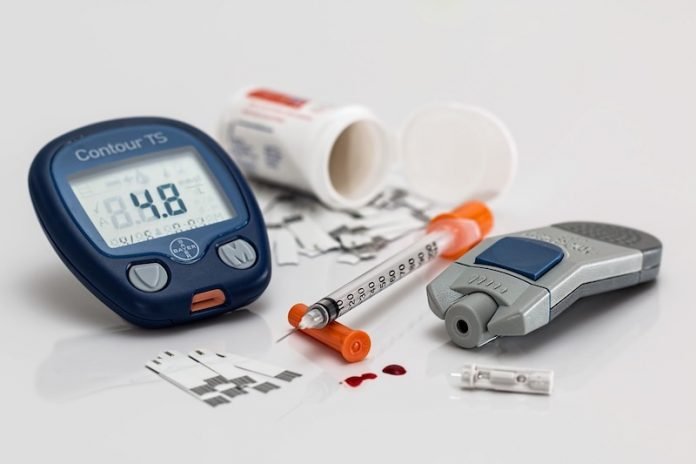
For years, scientists have been trying to solve a medical mystery: Why do people with type 1 or type 2 diabetes have an increased risk of developing some forms of cancer?
In a new study, researchers report a possible explanation for this double whammy.
They found that DNA sustains more damage and gets fixed less often when blood sugar levels are high compared to when blood sugar is at a normal, healthy level, thereby increasing one’s cancer risk.
These cancers include ovarian, breast, kidney and others.
Scientists have suspected that the elevated cancer risk for diabetics arises from hormonal dysregulation.
In addition to controlling blood glucose levels, the hormone insulin can stimulate cell growth, possibly leading to cancer.
Also, most people with type 2 diabetes are overweight, and their excess fat tissue produces higher levels of adipokines than those at a healthy weight.
These hormones promote chronic inflammation, which is linked to cancer.
But in the new study, the team wondered if the increased blood glucose levels seen in diabetes could harm DNA, making the genome unstable, which could lead to cancer.
They looked for a specific type of damage in the form of chemically modified DNA bases, known as adducts, in tissue culture and rodent models of diabetes.
Indeed, they found a DNA adduct, called CEdG, that occurred more frequently in the diabetic models than in normal cells or mice.
What’s more, high glucose levels interfered with the cells’ process for fixing it.
The team says exposure to high glucose levels leads to both DNA adducts and the suppression of their repair, which in combination could cause genome instability and cancer.
The team has completed a clinical study that measured the levels of CEdG, as well as its counterpart in RNA (CEG), in people with type 2 diabetes.
They found as in mice, people with diabetes had much higher levels of both CEdG and CEG than people without the disease.
They identified two proteins that appear to be involved: the transcription factor HIF1α and the signaling protein mTORC1, which both show less activity in diabetes. HIF1α activates several genes involved in the repair process.
The researchers found that if we stabilize HIF1α in a high-glucose environment, we increase DNA repair and reduce DNA damage.
And mTORC1 actually controls HIF1α, so if you stimulate mTORC1, you stimulate HIF1α.
The researchers plan to see if some drugs decrease cancer risk in diabetic animal models and if so, they will test them in humans.
The study was at the American Chemical Society (ACS) Fall 2019 National Meeting & Exposition. John Termini, Ph.D. presented the work at the meeting.
Copyright © 2019 Knowridge Science Report. All rights reserved.



